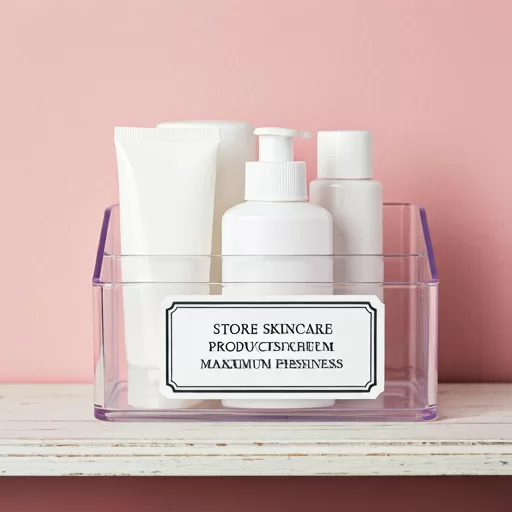How to Store Skincare Products for Maximum Freshness
Store Skincare Products: Skincare products are investments in your skin’s health, and proper storage ensures they remain fresh, effective, and safe to use. This guide covers everything you need to know about storing skincare products for maximum freshness, including the importance of temperature, humidity, and light exposure. We’ll also highlight specific products that require extra care, such as vitamin C serums and retinoids, and provide practical storage tips for your beauty routine.
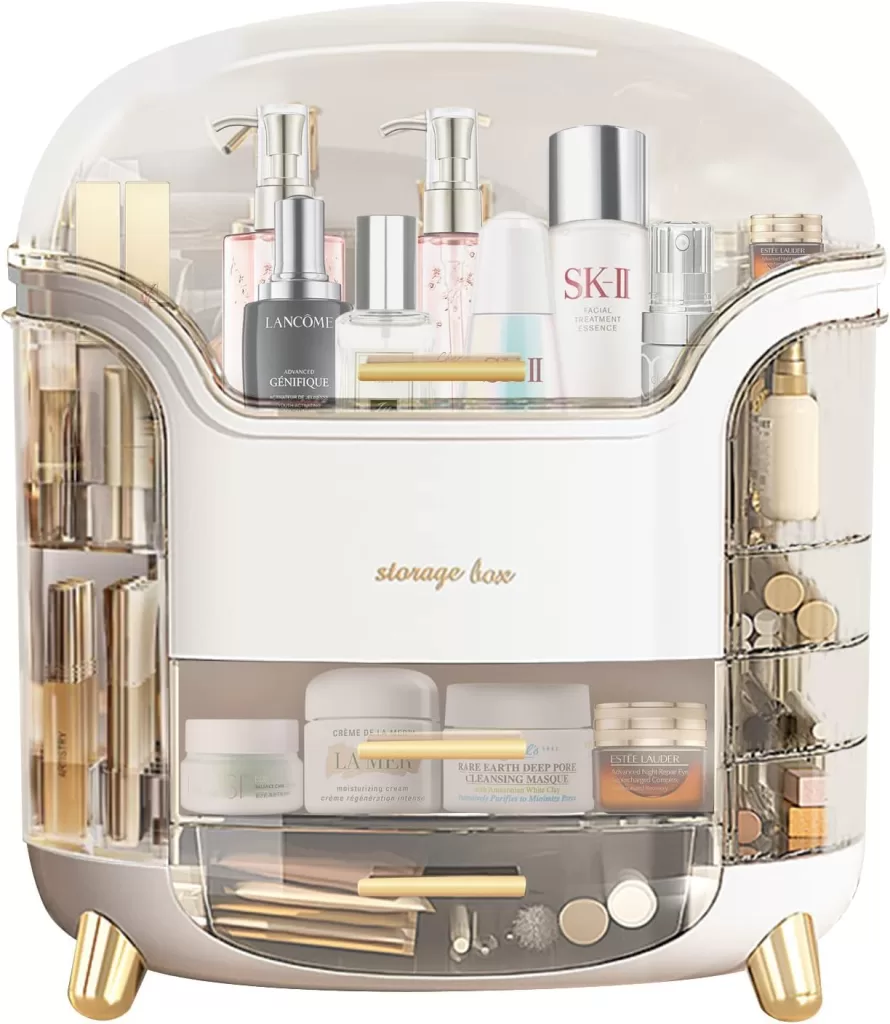
Suyoo Makeup Organiser Storage Box – Cosmetics, Skincare and Beauty Case with Clear Lid Display and Drawers for Dresser & Bathroom, Dust-Proof Waterproof
Why Proper Storage Matters
Skincare formulations often contain active ingredients that are sensitive to environmental factors. Exposure to heat, light, air, and humidity can:
- Degrade active ingredients, reducing their efficacy.
- Alter the texture, smell, and color of products.
- Increase the risk of contamination and spoilage.
Proper storage prolongs the shelf life of your skincare products and ensures they deliver the promised benefits to your skin.
How Does Using Dirty Fingers Contaminate Skincare Products?
When it comes to skincare, maintaining hygiene is crucial to protecting both your skin and the longevity of your products. Here’s a closer look at how using dirty fingers can contaminate skincare items:
- Transfer of Bacteria: Our hands come into contact with countless surfaces throughout the day, gathering germs and bacteria. If you use unwashed fingers to scoop or apply skincare products, these germs can easily be transferred to the product. Once there, bacteria can multiply, compromising the product’s integrity and potentially causing skin irritations or infections.
- Product Degradation: Many skincare items contain delicate ingredients that can deteriorate when exposed to contaminants. Introducing bacteria not only risks causing skin issues but can also degrade ingredients like vitamin C, retinol, and other sensitive actives, rendering them less effective.
- Mold Formation: In addition to bacteria, using dirty fingers can introduce fungi and spores that thrive in the moist environments typical of skincare jars. This can lead to mold growth, which is a clear indication that the product should no longer be used.
Tips for Keeping Your Skincare Products Clean
- Wash Your Hands: Always wash your hands thoroughly before touching any skincare products. This simple step goes a long way in keeping your items clean and safe.
- Use Tools: Instead of fingers, consider using clean spatulas or brushes to apply products. Many brands, like Tatcha and Drunk Elephant, provide these tools to maintain product hygiene.
- Regularly Clean Containers: Periodically wipe down the lids and pumps with a sanitizing wipe to prevent buildup and contamination. This is especially important for pump dispensers, as old product can accumulate at the exit point.
By adopting these practices, you ensure that your skincare routine remains effective and safe, promoting healthier skin and extending the life of your favorite products.
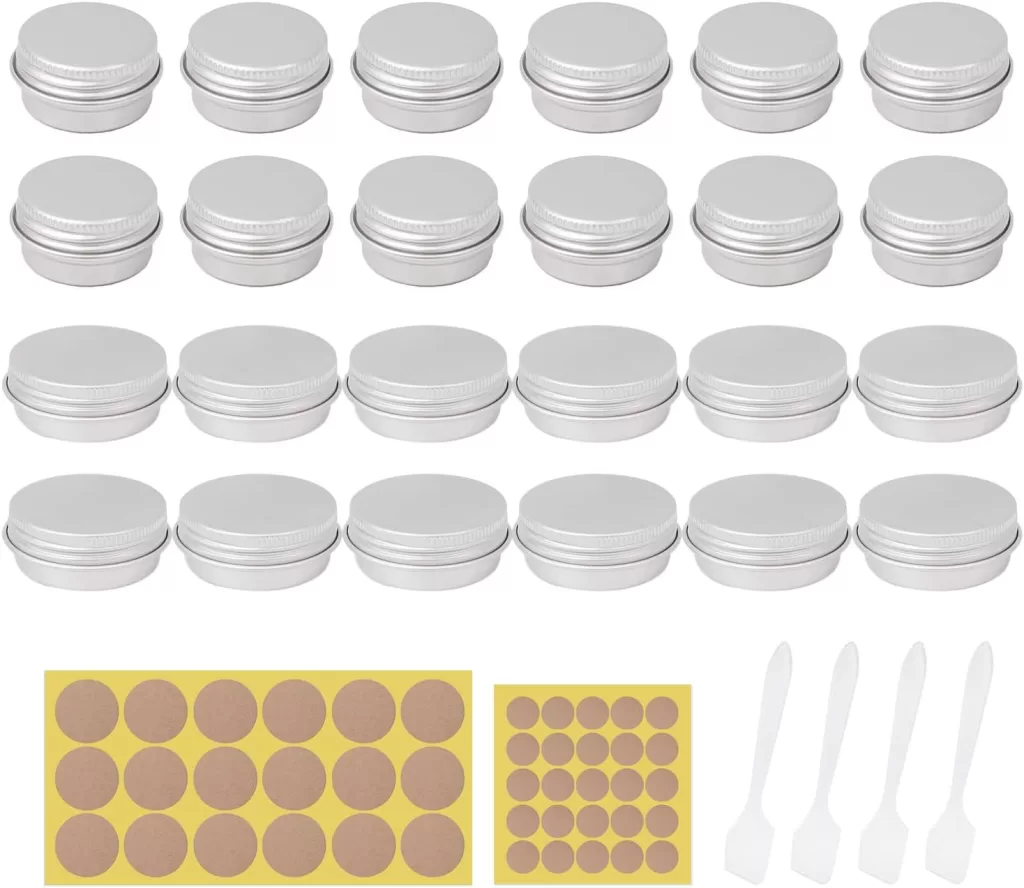
24 Aluminum Tins (20ml + 5ml), With 43 Round Stickers and 4 Measuring Spoons, Threaded Round Aluminum Tin Cream Jar, Suitable for Packaging Skin Care Products
Skincare Products That Require Special Care
1. Vitamin C Serums
Vitamin C is highly unstable and prone to oxidation when exposed to air, light, and heat. Improper storage can render it ineffective and even harmful to your skin. To maintain its potency:
- Store in a cool, dark place.
- Choose opaque, airless pump packaging.
- Use within the recommended time after opening.
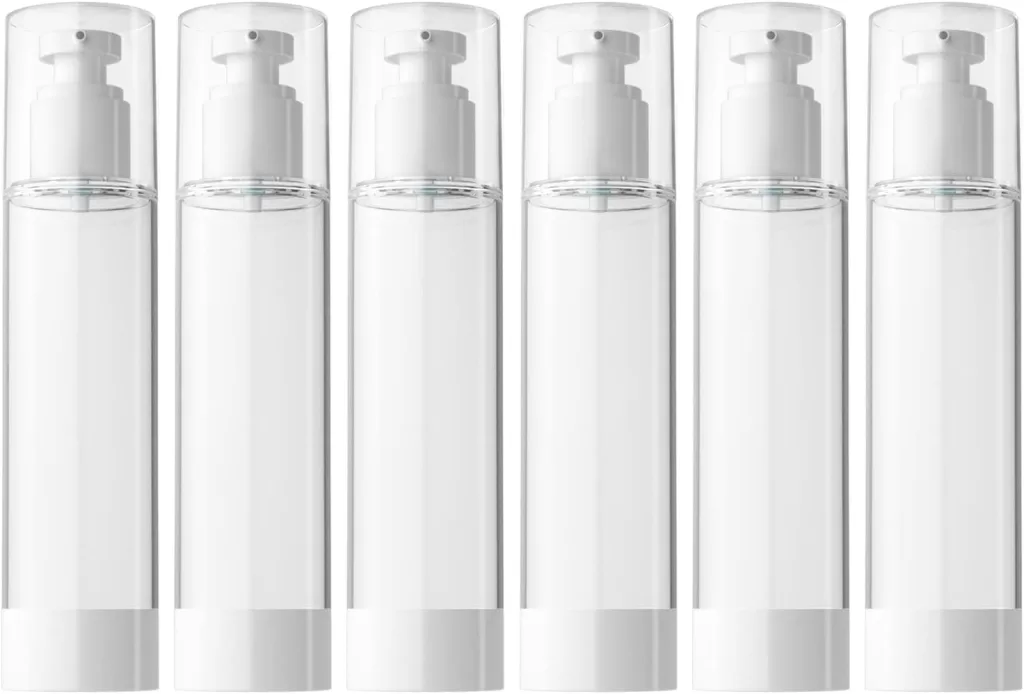
LONGWAY 6Pcs 100ML Airless Pump Bottle, Travel bottles for Toiletries Refillable Empty Containers Vacuum Press Pump Bottles for Foundation, Essence, Lotion
2. Retinoids and Retinol Creams
Retinoids are sensitive to light and heat, which can degrade their effectiveness. Proper storage involves:
- Keeping them in dark, cool environments.
- Avoiding storage in humid areas, like bathrooms.
- Using airtight containers to limit air exposure.
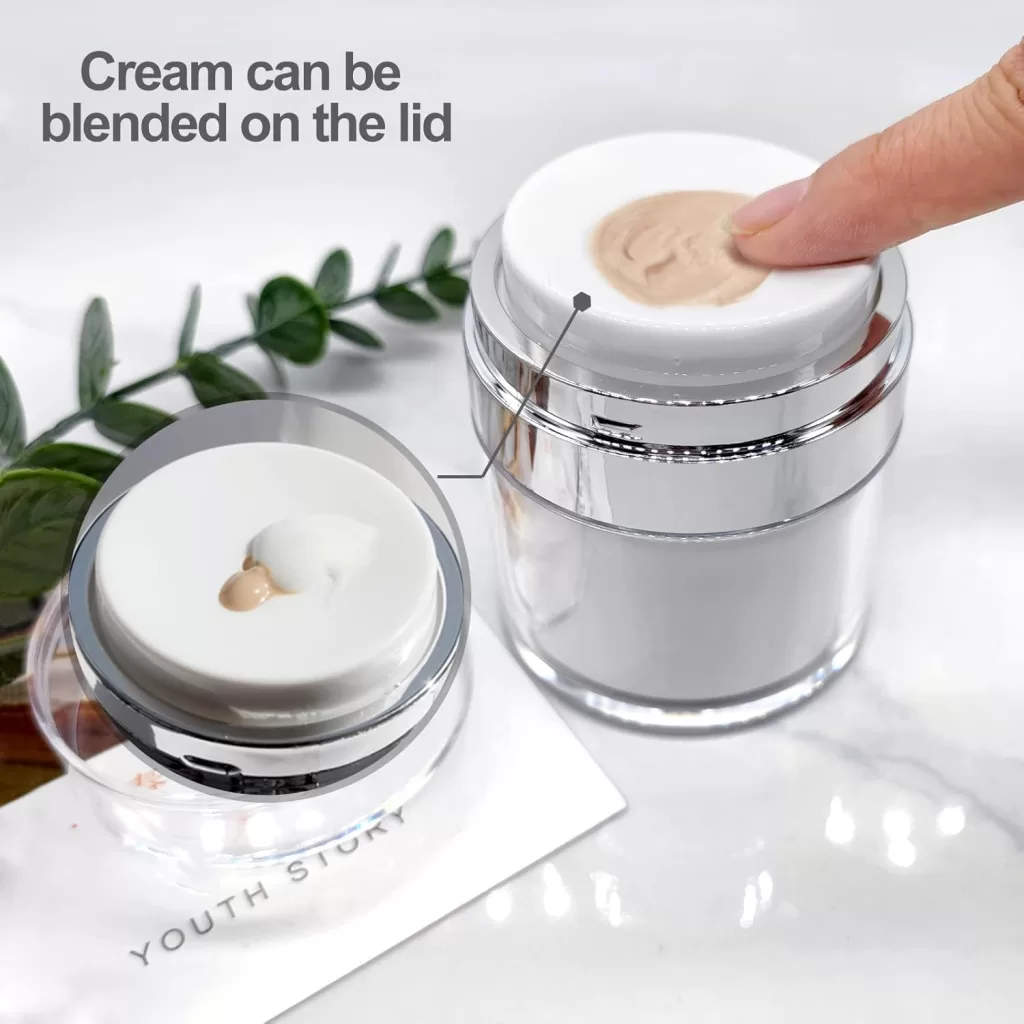
Portable 50ml Vacuum Press Pump Bottle Airless Travel Pump Dispenser Leak Proof Refillable Empty Squeeze Cosmetic Jars Acrylic Cream Container (White)
3. Sunscreens
Sunscreens lose efficacy when exposed to high temperatures, making them less effective at protecting your skin. Always:
- Store in a cool, shaded area.
- Avoid leaving them in hot cars or direct sunlight.
4. Organic and Natural Skincare Products
These products often lack preservatives, making them more prone to spoilage. Refrigeration is ideal for extending their shelf life.
Benzoyl peroxide is a common ingredient found in many acne treatments due to its antibacterial properties. However, the effectiveness of this compound can be sensitive to certain conditions. Refrigeration can be necessary for several reasons:
- Stability Maintenance: Some benzoyl peroxide formulations are more stable at lower temperatures. Keeping them refrigerated helps prevent the breakdown of the active ingredient, ensuring the treatment remains potent.
- Prolonged Shelf Life: By storing in cooler environments, the treatment can stay effective for a longer period, reducing the risk of degradation that can occur at room temperature.
- Consistency Preservation: Exposure to heat can alter the texture and consistency of acne products, making them less effective. Refrigeration helps maintain the intended formulation, which is crucial for even application on the skin.
- Prevention of Separation: In some gel or cream formulations, the ingredients may separate if not kept cool, compromising the product’s ability to work as intended.
Always refer to the manufacturer’s instructions for specific storage requirements to get the most out of your benzoyl peroxide-based treatment.
What Type of Homemade Skincare Products Need Refrigeration?
Homemade skincare products made from food-based ingredients often require refrigeration. These DIY concoctions, crafted from elements like fruits, vegetables, or dairy, don’t contain preservatives, making them prone to spoilage.
Why Refrigerate?
- Preserve Freshness: Natural ingredients without additives can quickly spoil at room temperature.
- Prevent Mold Growth: Leaving them in a warm space encourages mold, rendering your efforts useless.
Examples of Products to Chill:
- Fruit Masks: Blends of bananas, avocados, or berries.
- Yogurt-Based Creams: Formulated with the richness of probiotics.
- Herbal Pastes: Infusions such as aloe vera or cucumber.
By placing these items in the fridge, you ensure they remain effective and safe for your skin. So, next time you create a lush, organic blend, remember that a little chill goes a long way!
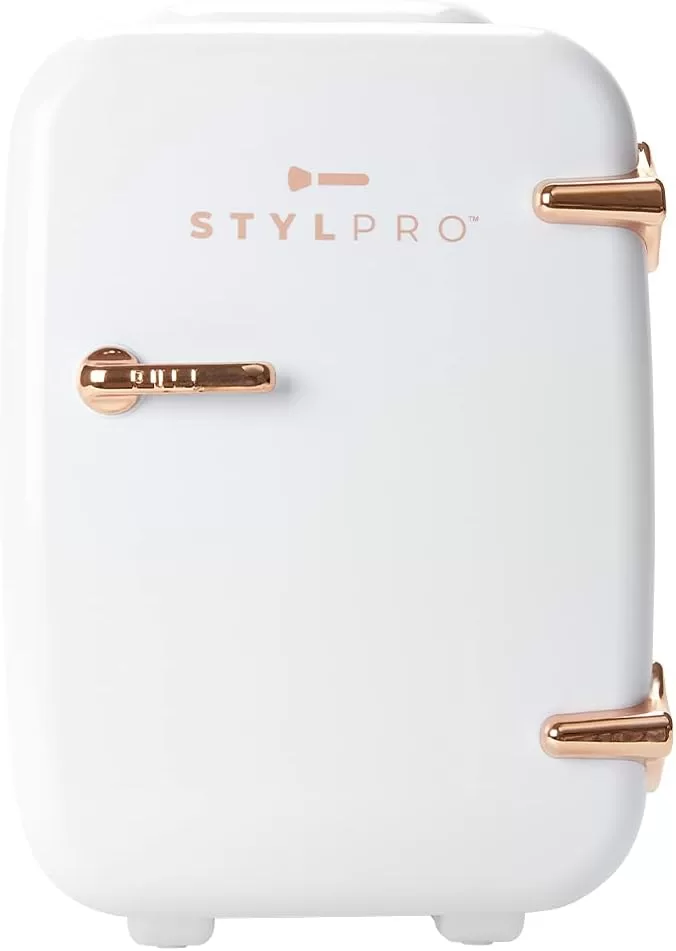
STYLPRO Mini Beauty Fridge in Rose Gold: 4L portable cooler/warmer for skincare, makeup, and cosmetics. Organize in bedroom, bathroom, or dressing room
Best Practices for Storing Skincare Products
1. Keep Products Away from Direct Sunlight
UV rays can degrade active ingredients and destabilize formulations. Store products in:
- Cabinets or drawers.
- Dark, opaque packaging if possible.
2. Maintain a Consistent Temperature
Fluctuating temperatures can affect product stability. Ideal storage conditions include:
- A cool, stable environment (around 50-70°F).
- Refrigeration for temperature-sensitive items like vitamin C serums and eye creams.

Gdsode Mini Fridge, 6L/6 Cans Mini Fridges Cold & Warm, Car Fridge, >25dB, Adjustable temperature, LED Temperature Display, Car/Home Mini…
3. Avoid Humid Environments
Humidity can lead to contamination, especially in jars and powders. To prevent this:
- Store products outside the bathroom.
- Use dehumidifiers if necessary.
4. Seal Containers Tightly
Air exposure can oxidize active ingredients. Always:
- Close lids securely after use.
- Opt for pump or tube packaging instead of jars.
5. Use a Skincare Fridge
A dedicated skincare fridge helps maintain ideal storage conditions for sensitive products. Benefits include:
- Prolonging shelf life.
- Providing a refreshing application experience.
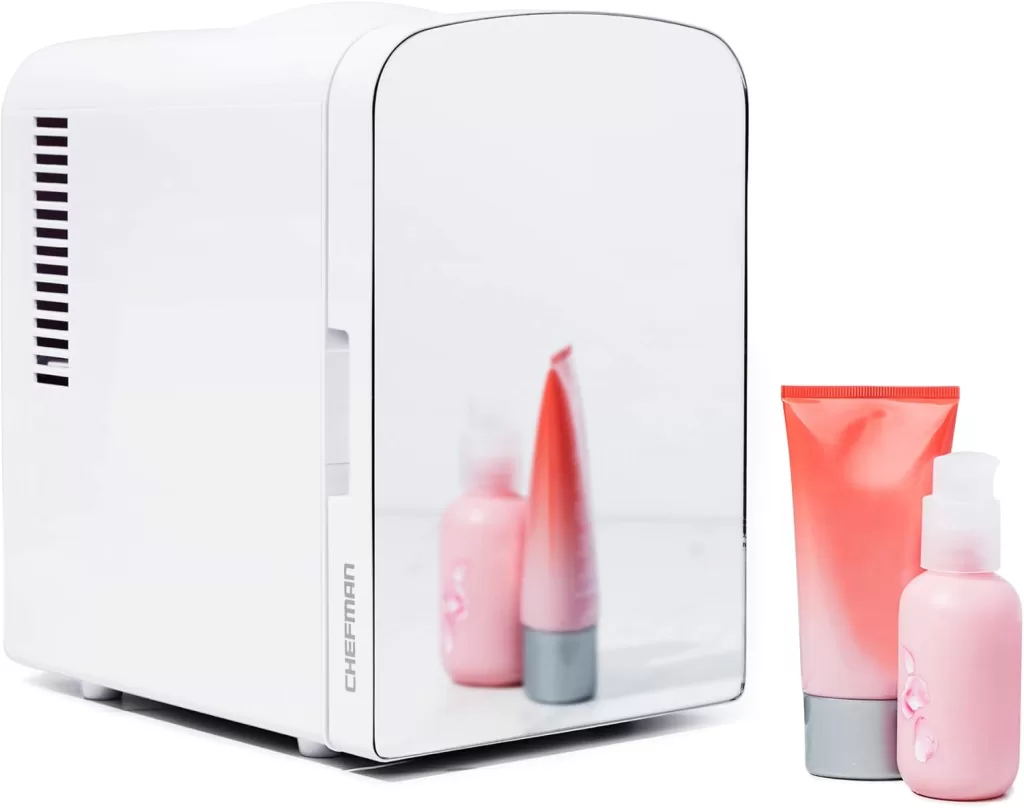
Iceman Portable Mirrored Personal Fridge 4 Litre Mini Refrigerator, Skin Care, Makeup Storage, Beauty, Serums and Face Masks, Small for Desktop Or Travel,…
How to Store Skincare Products for Maximum Freshness
Temperature Control
Products like vitamin C and retinoids benefit from cool storage to maintain stability. Avoid extreme temperatures by:
- Keeping products away from heaters and direct sunlight.
- Using a mini fridge for sensitive items.
Protect from Light
Light exposure accelerates the degradation of active ingredients. Opt for:
- Dark glass or opaque containers.
- Storage in dark cabinets or drawers.
Monitor Humidity Levels
Humidity can spoil formulations and encourage bacterial growth. Reduce humidity by:
- Storing products in a dry area.
- Avoiding storage near sinks or showers.
What Are the Risks of Diluting Skincare Products with Water?
Diluting skincare products may seem like a cost-saving measure, but it comes with significant risks that can affect both the efficacy and safety of your skincare routine.
- Compromised Effectiveness: When you add water to a skincare product, it can weaken its active ingredients, reducing its overall effectiveness. For instance, serums or moisturizers are formulated with precise concentrations of ingredients to deliver optimal results. Introducing water can upset this balance, leading to subpar performance.
- Increased Contamination Risk: Water can introduce harmful microorganisms like bacteria and fungi into the product. Most skincare formulations include preservatives to prevent microbial growth, but these are only effective at the product’s original concentration. Diluting it can overwhelm the preservatives and foster an environment where harmful microbes thrive.
- Altered Composition and Consistency: Water may change the texture and consistency of the product, which can impact how it performs. A cream could become too thin to adequately moisturize, or a gel might become runny, making application a challenge.
- Potential Skin Irritation: Microbial contamination isn’t just bad for the product— it can lead to skin reactions. Using products compromised by bacteria or molds can cause irritation, redness, and even infections, especially for individuals with sensitive skin.
- Unpredictable Results: Manufacturers like Neutrogena and L’Oreal formulate products under strict guidelines. When adjusted at home without controlled conditions, outcomes become unpredictable, and the intended benefits may not be realized.
While diluting products with water might seem like a harmless or economical strategy, it often undermines the very purpose of your skincare regimen. Prioritize maintaining the integrity and safety of your products by using them as intended.
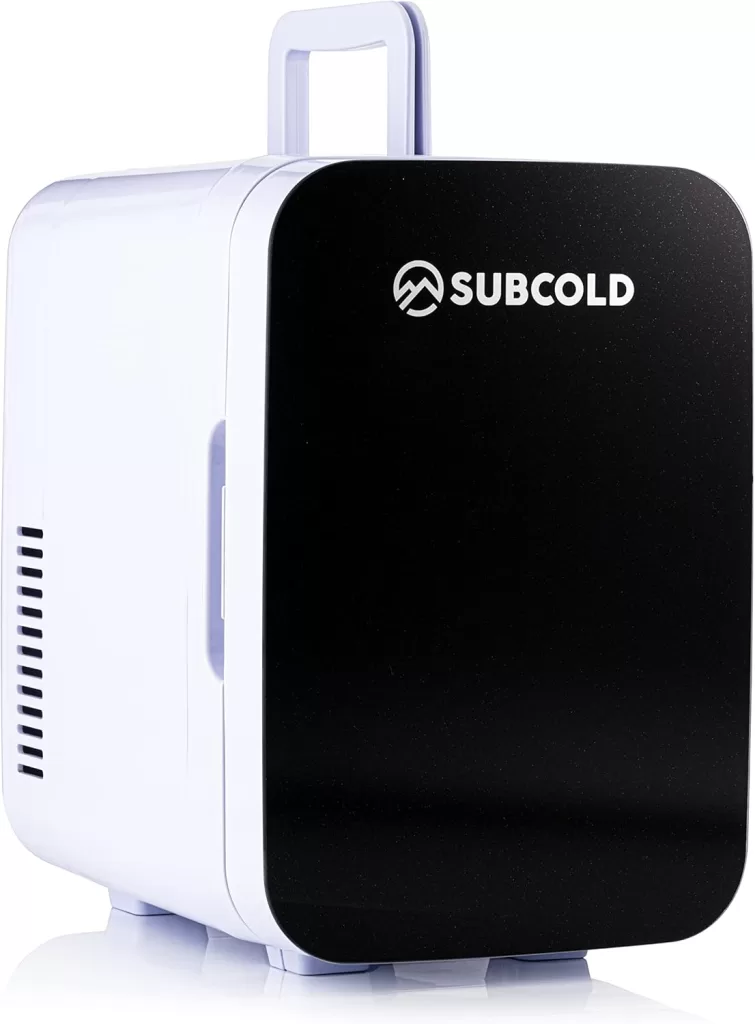
Subcold Ultra 6 Mini Fridge Cooler & Warmer | 3rd Gen | 6L capacity | Compact, Portable and Quiet | AC+USB Power Compatibility
Long-Term Storage Tips
Rotate Products
Use older products first to ensure nothing goes to waste. Keep track of:
- Expiration dates.
- Opened and unopened items.
Understanding the PAO (Period After Opening) Time Frame for Skincare Products
When it comes to determining the longevity of your skincare products, you might not always find a straightforward expiration date on the packaging. Instead, many products feature a PAO or Period After Opening indicator.
What is a PAO Time Frame?
The PAO time frame is a guideline manufacturers provide to indicate how long a skincare product will remain effective and safe after it’s been opened. It’s often displayed as an icon resembling an open jar, with a number followed by the letter ‘M’.
For instance, 12M means the product is intended to be used within 12 months after opening.
Where to Find the PAO Information
You’ll usually find this symbol on the packaging itself, which could be the outer box or the actual container like a tube, jar, or bottle. However, be cautious: if it’s only on the outer packaging, you might forget it once you dispose of that box or wrapper.
Tips for Managing Product Use
- Mark the Date: To keep track, consider writing the date you first open the product on the container using a permanent marker.
- Proper Storage: To extend the product’s effectiveness till the indicated PAO duration, store it in a cool, dry place away from direct sunlight. Heat and humidity can degrade the product faster.
By understanding and utilizing the PAO time frame effectively, you can ensure that your skincare routine is both safe and beneficial.
Discard Expired Items
Expired products can irritate your skin and lose effectiveness. Signs of spoilage include:
- Changes in color, smell, or texture.
- Separation of ingredients.
To keep track of a product’s Period After Opening (PAO) time frame, try this simple trick: Grab a permanent marker and jot down the date you first opened the product either on its bottom or back. This way, you’ll always know how long the product has been in use.
Alternatively, consider creating a note in your smartphone or setting a calendar reminder to alert you when the product may be nearing the end of its recommended lifespan. This can provide you with an easy-to-follow timeline that you can reference anytime.
If you’re a fan of organization, consider using color-coded stickers on your products. Assign different colors for specific months to quickly identify purchase dates at a glance. This method ensures that even without packaging, you’ll always be on top of your skincare regimen.
When Do Skincare Products Expire?
Skincare products, much like any beauty item, have a limited shelf life. Even with perfect storage conditions, they won’t last forever. Using expired skincare can lead to bacterial growth, skin irritation, or even infections. Here’s how to stay on top of your product’s expiry dates.
Identifying Expiry Dates
- Expiration Dates: Some products, especially prescription items like anti-acne creams, come with a clear expiration date on their packaging.
- Period After Opening (PAO): Many skincare items feature a PAO symbol, which indicates how long the product remains effective after it’s opened. Look for a small jar icon with a number followed by ‘M’ (e.g., 12M means it’s good for 12 months post-opening).
If the PAO is only on the outer packaging, note the product’s opening date directly on the container using a permanent marker.
Proper Storage
Ensure skincare products are stored in a cool, dry place away from sunlight to maximize their shelf life. Improper storage may shorten their effective life significantly, even before reaching the PAO deadline.
Signs Your Skincare Has Expired
Watch for these indicators that a product might have expired:
- Changes in Smell: If the scent has altered or developed an odd odor, it’s time to discard it.
- Altered Texture: Look out for a runny, separated, or lumpy consistency.
- Application Issues: If the product feels grainy or streaky on your skin, it may no longer be usable.
- Skin Reactions: Unexplained redness, irritation, or blemishes post-application are red flags that the product has expired.
When these changes occur, it’s essential to replace your skincare item to avoid adverse skin reactions. Your skin deserves the freshest care possible.
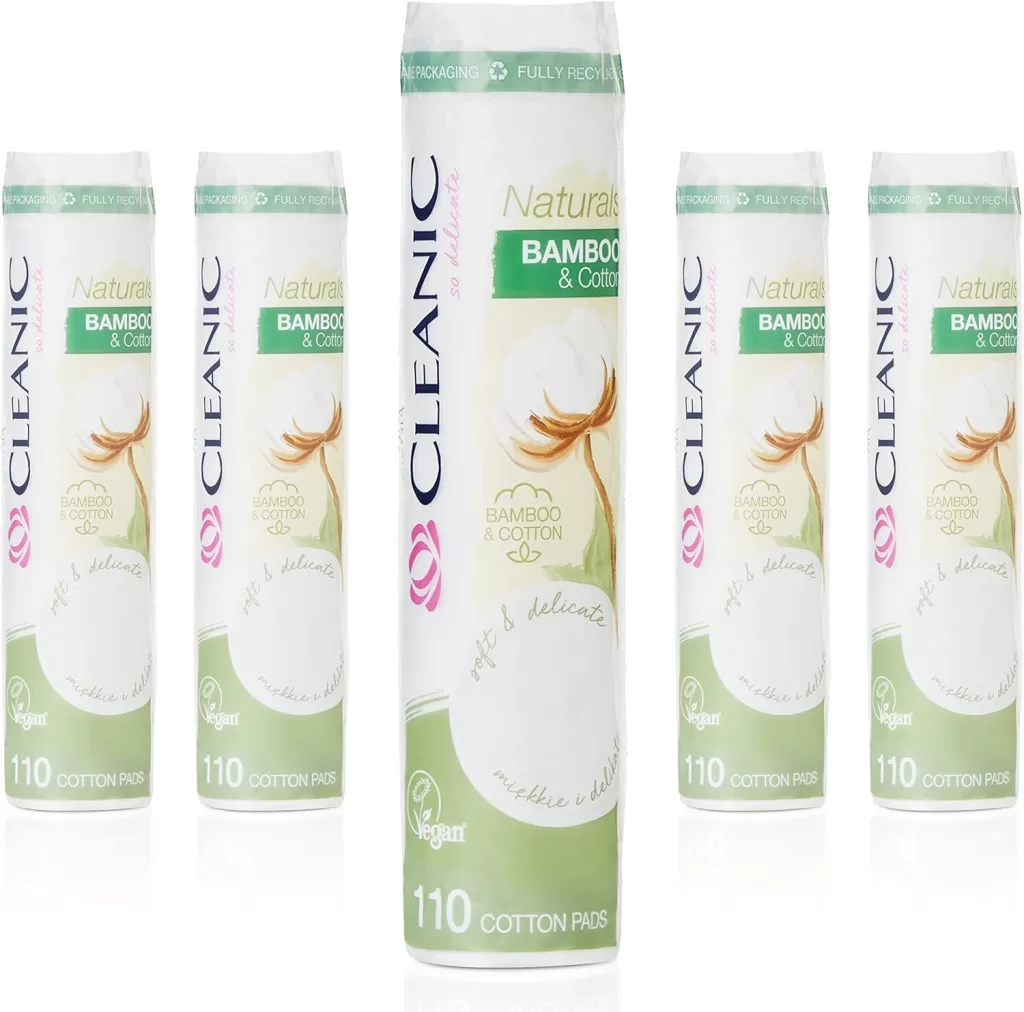
Cleanic Naturals 550 Ct Bamboo Cotton Pads | Makeup Remover Pads | Cotton Discs for Skin Care | Organic Bamboo Cleansing Pads Extra Absorbent | Eco Friendly…
FAQs
Q: Can I store all my skincare products in the fridge?
A: Not all products need refrigeration. Items like moisturizers and cleansers are fine at room temperature, but vitamin C serums and eye creams benefit from cool storage.
Why Refrigerate Certain Products?
Refrigeration isn’t a blanket necessity for all skincare products, but it can enhance the longevity and effectiveness of some. For instance, storing vitamin C serums and retinol in the fridge helps prevent the breakdown of active ingredients, keeping them potent for longer. Eye creams also enjoy a cooling boost, which can help reduce puffiness and soothe tired eyes.
What Should Go in the Fridge?
Some products, especially those with active ingredients or organic formulations, may benefit from a cooler environment. Benzoyl peroxide-based treatments, for instance, might require refrigeration to maintain their stability. Always check the storage instructions on the packaging to be sure.
Avoid Refrigerating These Products
Conversely, balms and oil-based products should be kept at room temperature. Low temperatures can cause them to split, become cloudy, or even solidify. Clay-based cleansers and masks should also remain outside the fridge, as they can harden and become unusable when chilled.
DIY and Natural Skincare Considerations
If you’re creating your own natural skincare treatments at home, particularly those without preservatives, refrigeration is crucial. These homemade creations can quickly become moldy if left at room temperature. Similarly, some organic skincare products with shorter shelf lives can benefit from refrigeration to prolong their usability.
In summary, while a fridge stocked with skincare might look chic, it’s all about knowing which products truly benefit from the chill and which ones are best left on the bathroom shelf.
Q: How do I know if a product has expired? A: Look for changes in color, smell, or texture, as well as separation of ingredients. Always check the expiration date on the packaging.
A: Look for changes in color, smell, or texture, as well as separation of ingredients. Always check the expiration date on the packaging.
When it comes to skincare, understanding when a product expires is crucial for maintaining its effectiveness and ensuring your skin’s safety. Unlike some items that come with a clear expiration date, many skincare products follow a PAO (Period After Opening) guideline. This is usually indicated on the packaging with a symbol accompanied by a number, such as 12M, meaning the product is safe to use for 12 months after opening.
To keep track of these timelines, consider marking the date you first opened the product directly on its container. This helps prevent the common issue of forgetting once the packaging is discarded.
Proper storage is also key. Even within the PAO timeframe, products can spoil if exposed to unfavorable conditions like heat or humidity.
Here are some telltale signs that your product may have gone bad:
- Unusual Odor: A change in scent can be an early indicator of spoilage.
- Texture Changes: Look out for runniness, separation, or lumps.
- Skin Reaction: If you experience redness or irritation, it might be time to discard the product.
By staying vigilant about these signs and storage suggestions, you can ensure your skincare products remain effective and safe to use.
Q: Why should I avoid storing products in the bathroom?
A: Bathrooms are humid environments, which can degrade formulations and encourage bacterial growth.
While it might seem convenient to keep your skincare products in the shower, the heat and steam can actually break down the active ingredients, making them less effective over time. This degradation not only affects the performance of your products but also shortens their shelf life.
Additionally, the constant exposure to moisture can lead to mold and bacteria forming in improperly sealed containers. This isn’t just a threat to your skincare routine—it’s a potential health hazard.
Moreover, washing your face with hot shower water strips away the natural oils your skin needs, often resulting in dryness and a compromised skin barrier. To protect the efficacy of your skincare products and maintain healthy skin, store them in a cabinet or drawer away from the steam. And when cleansing, opt for lukewarm water before stepping into the shower.
Q: Can sunlight damage my skincare products? A: Yes, UV rays can degrade active ingredients, reducing their effectiveness. Store products in a dark, cool place.
Q: Do natural skincare products require special storage? A: Yes, natural products often lack preservatives and are prone to spoilage. Refrigeration is ideal to extend their shelf life.
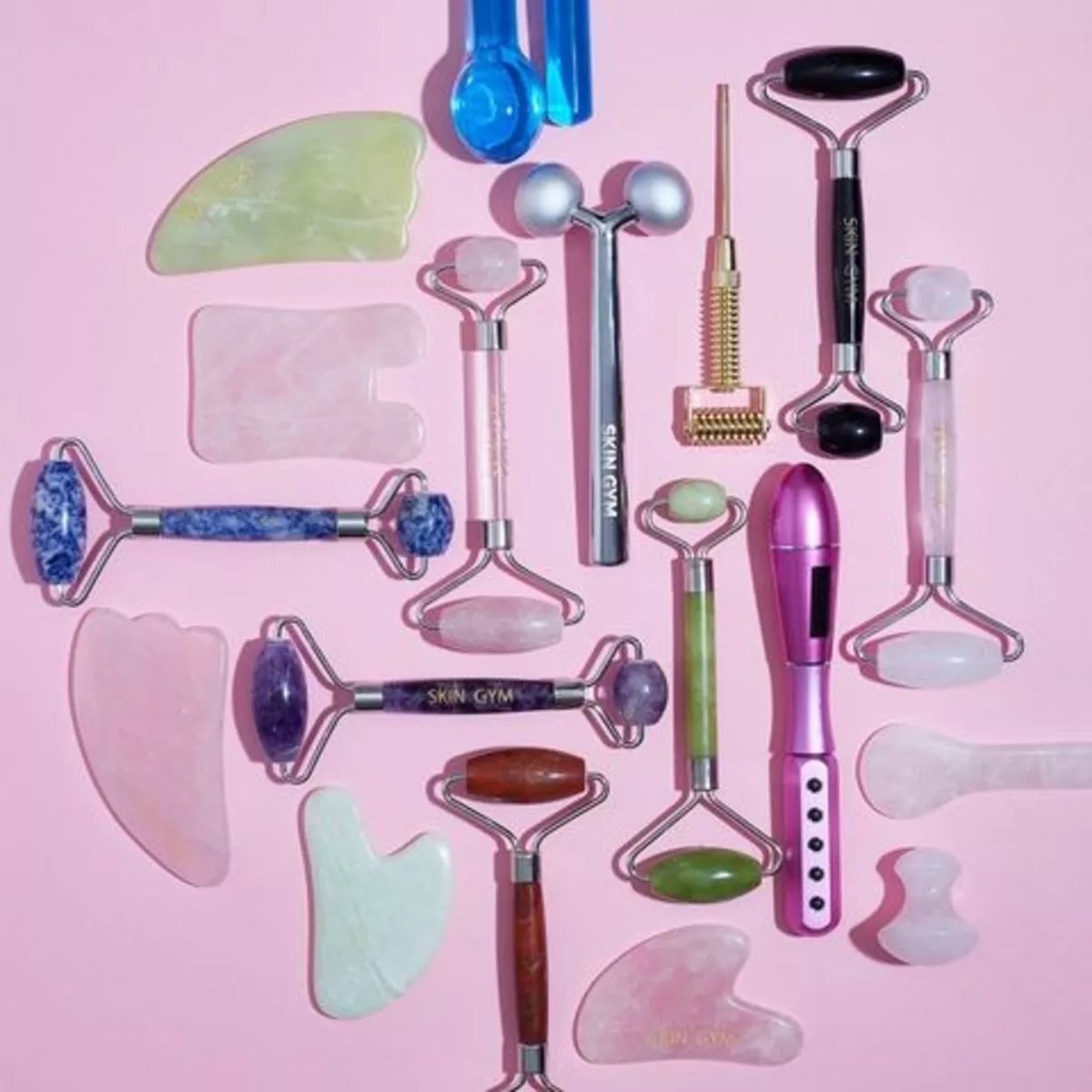
Best Beauty Tools for Skincare at Home Beauty tools are no longer exclusive to spas and salons. With the rise of at-home skincare, many high-tech devices are available to help you achieve professional results from the comfort of your home. Whether you’re aiming for glowing skin, improved elasticity, or targeted acne treatment, these tools are…
This guide provides all the information you need to store skincare products safely and maintain their freshness and efficacy. Let your products work as intended by following these essential tips!

Explore more articles like this @ Where And How Resources
If you found this article helpful, don’t forget to share it with your friends and followers!

